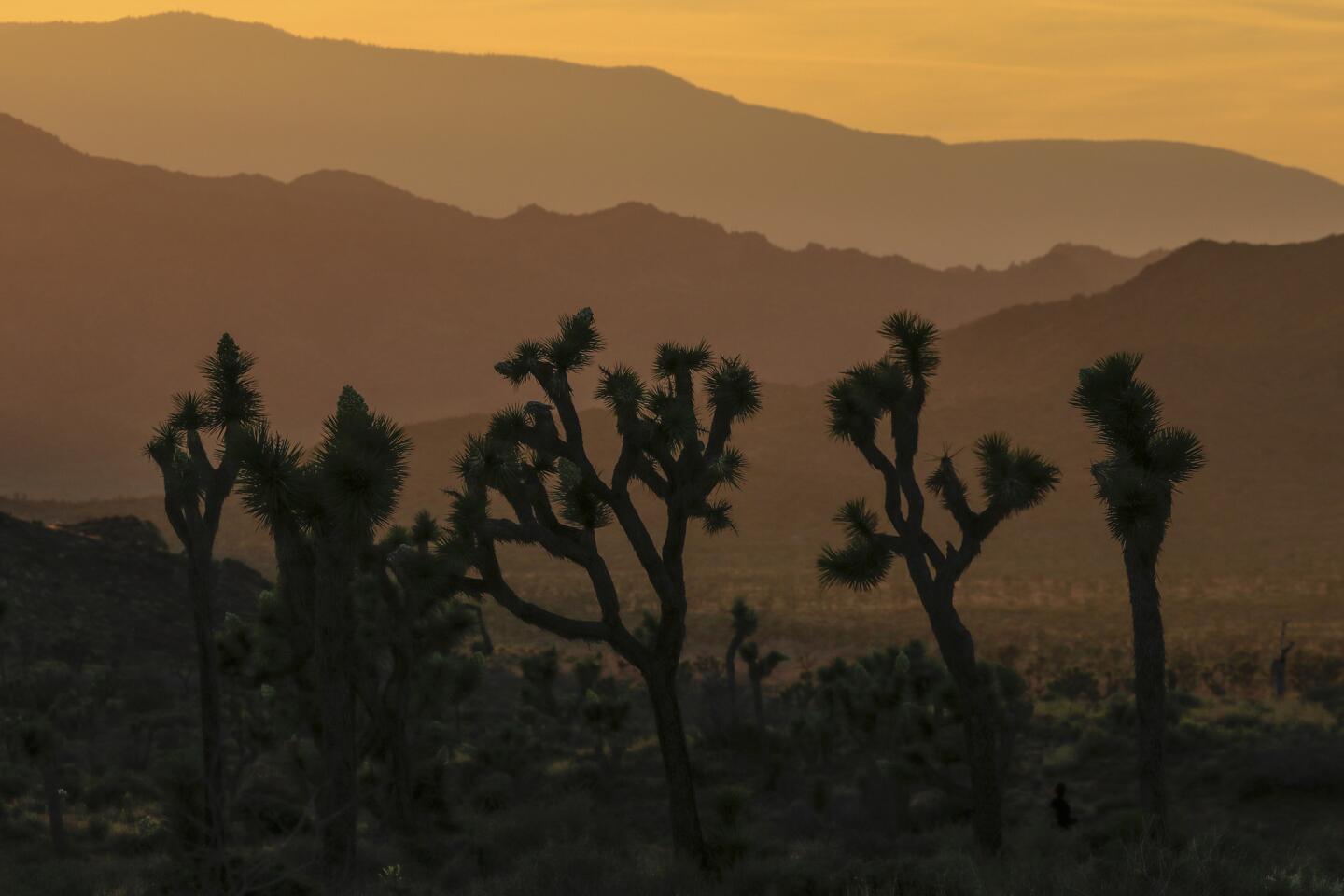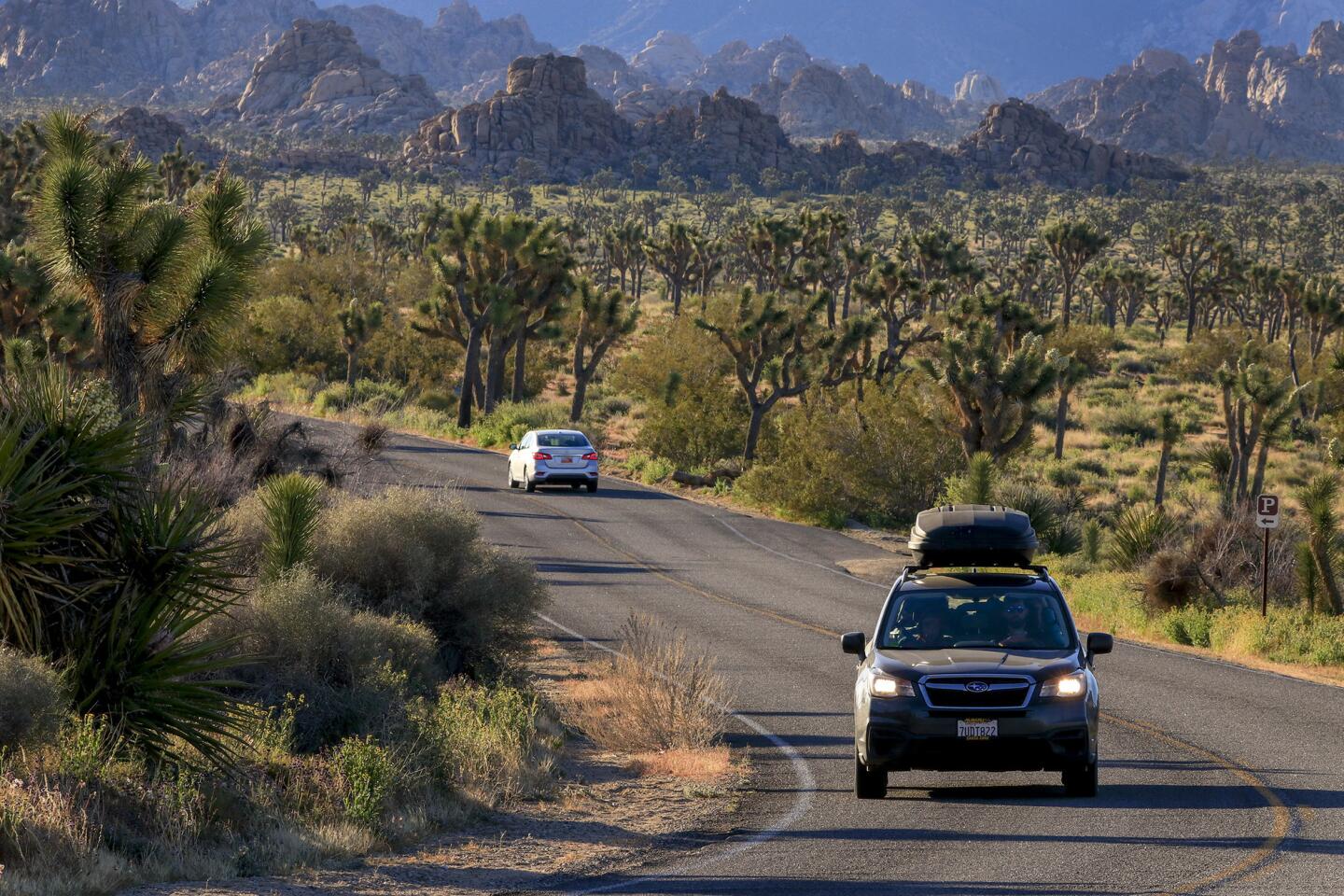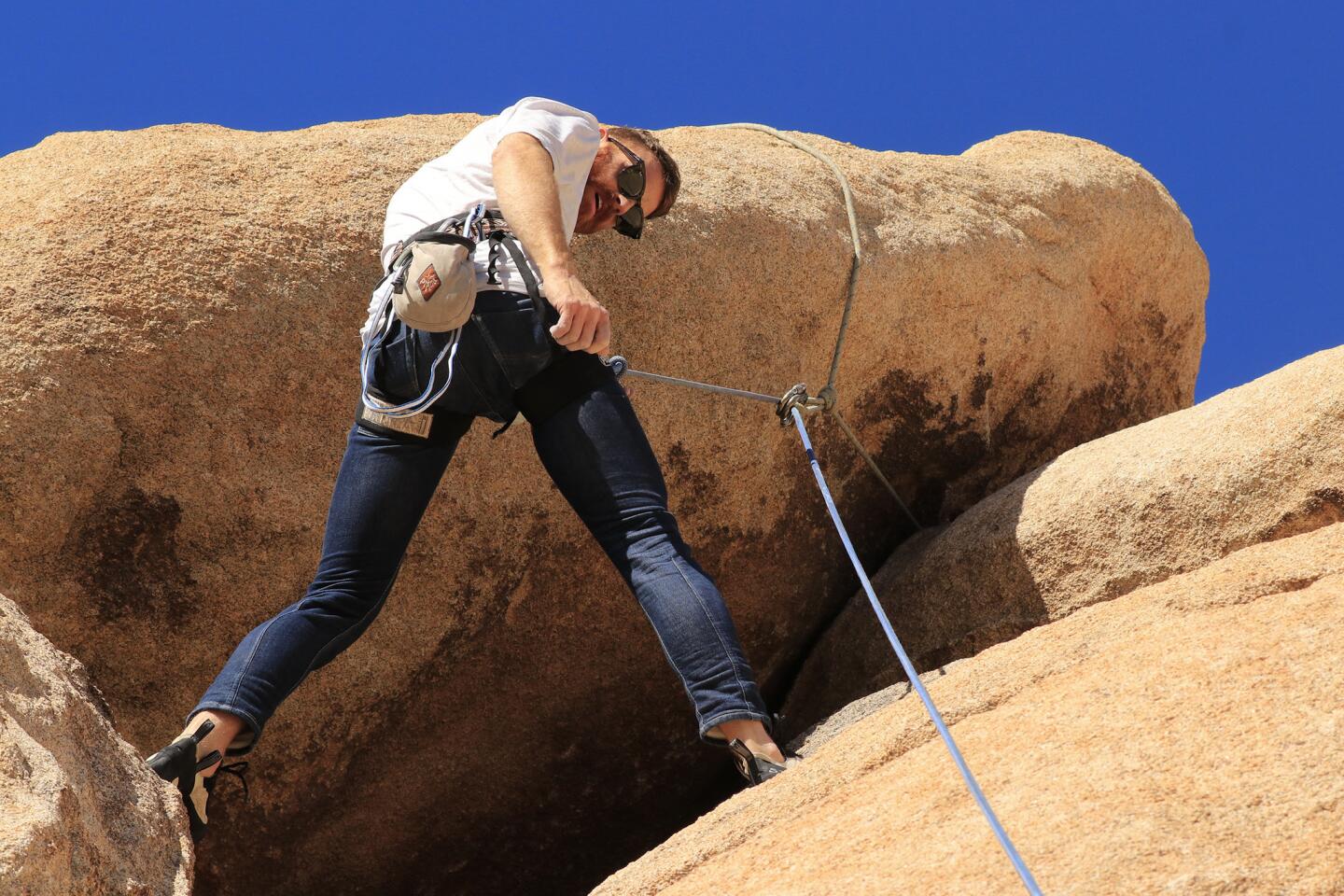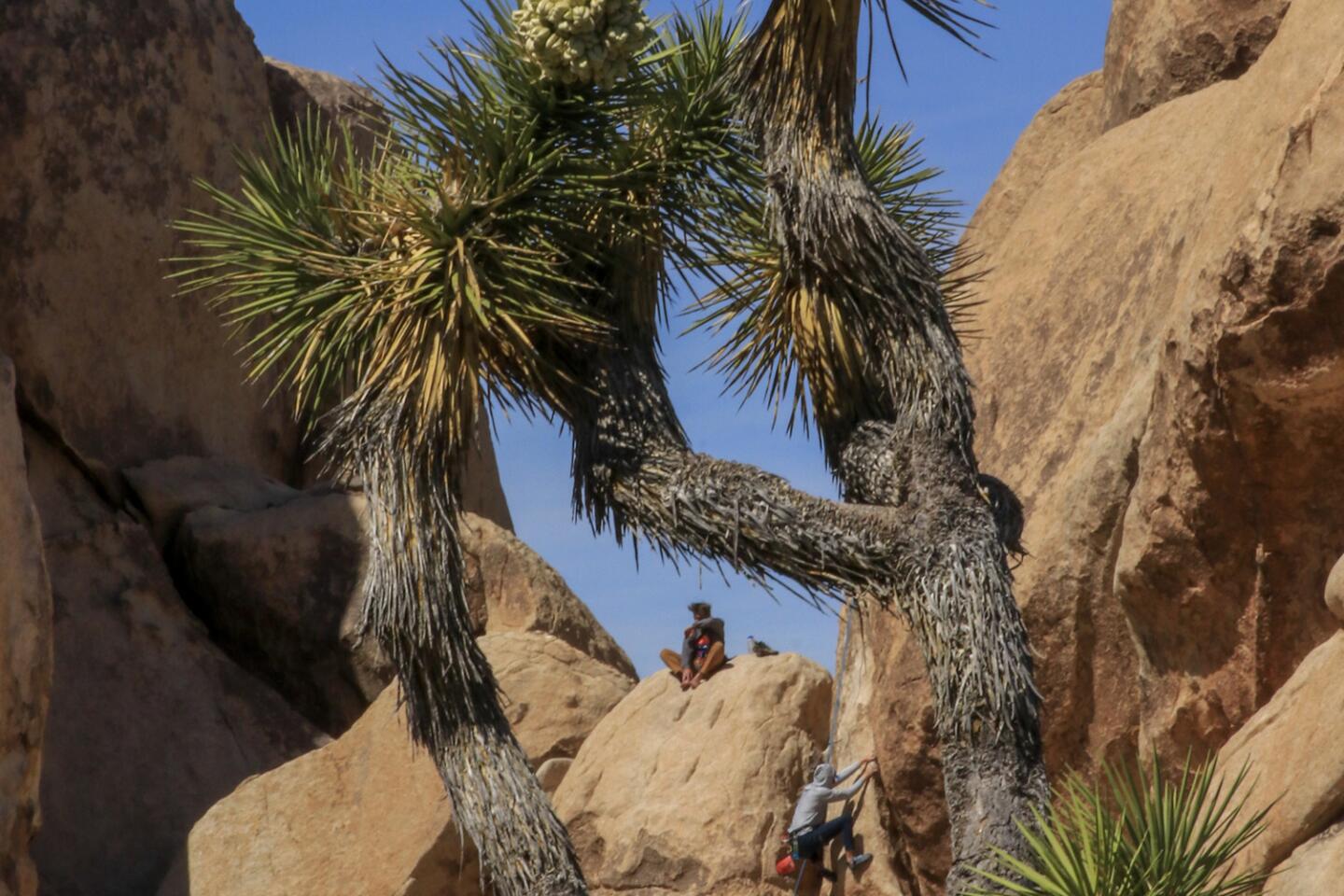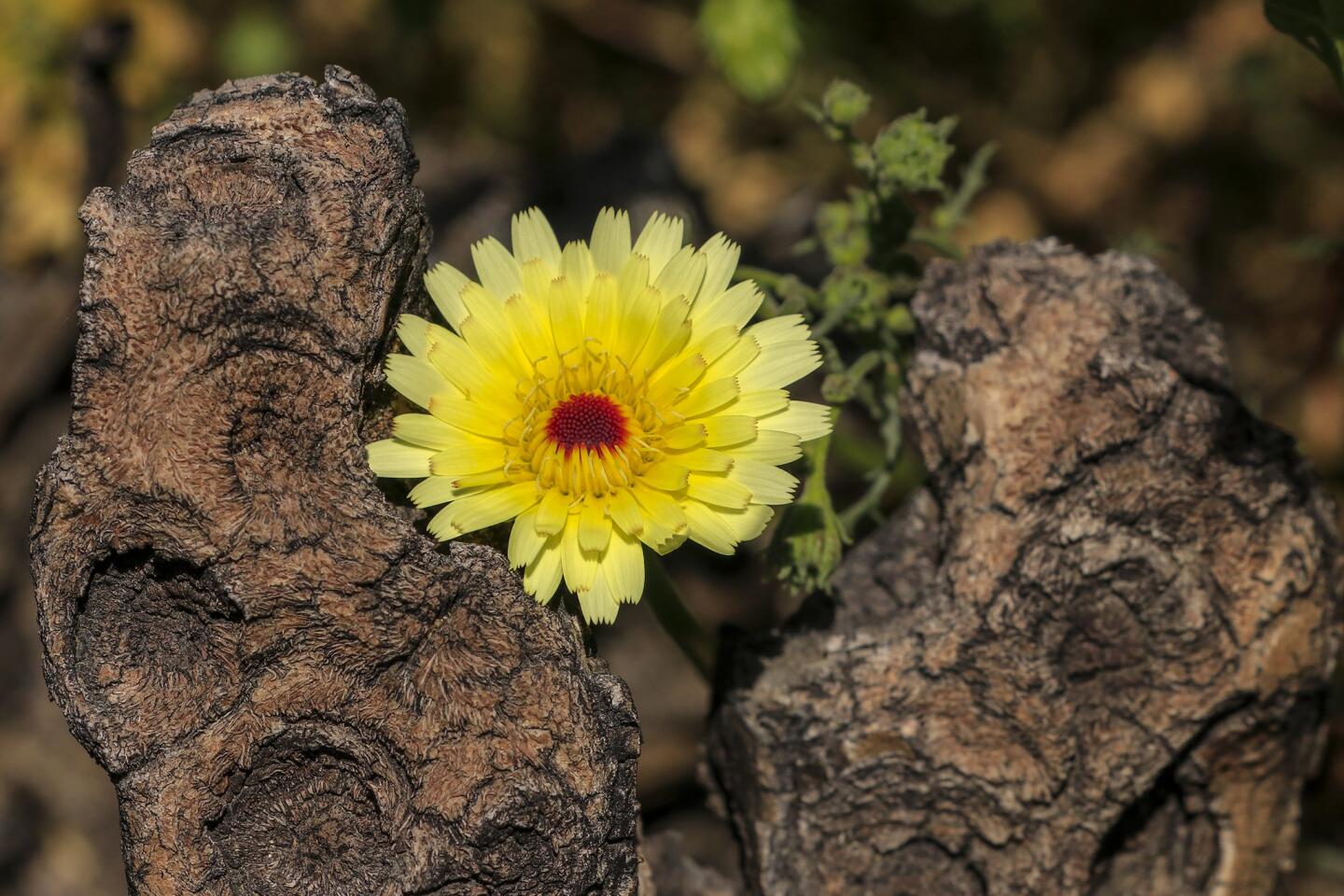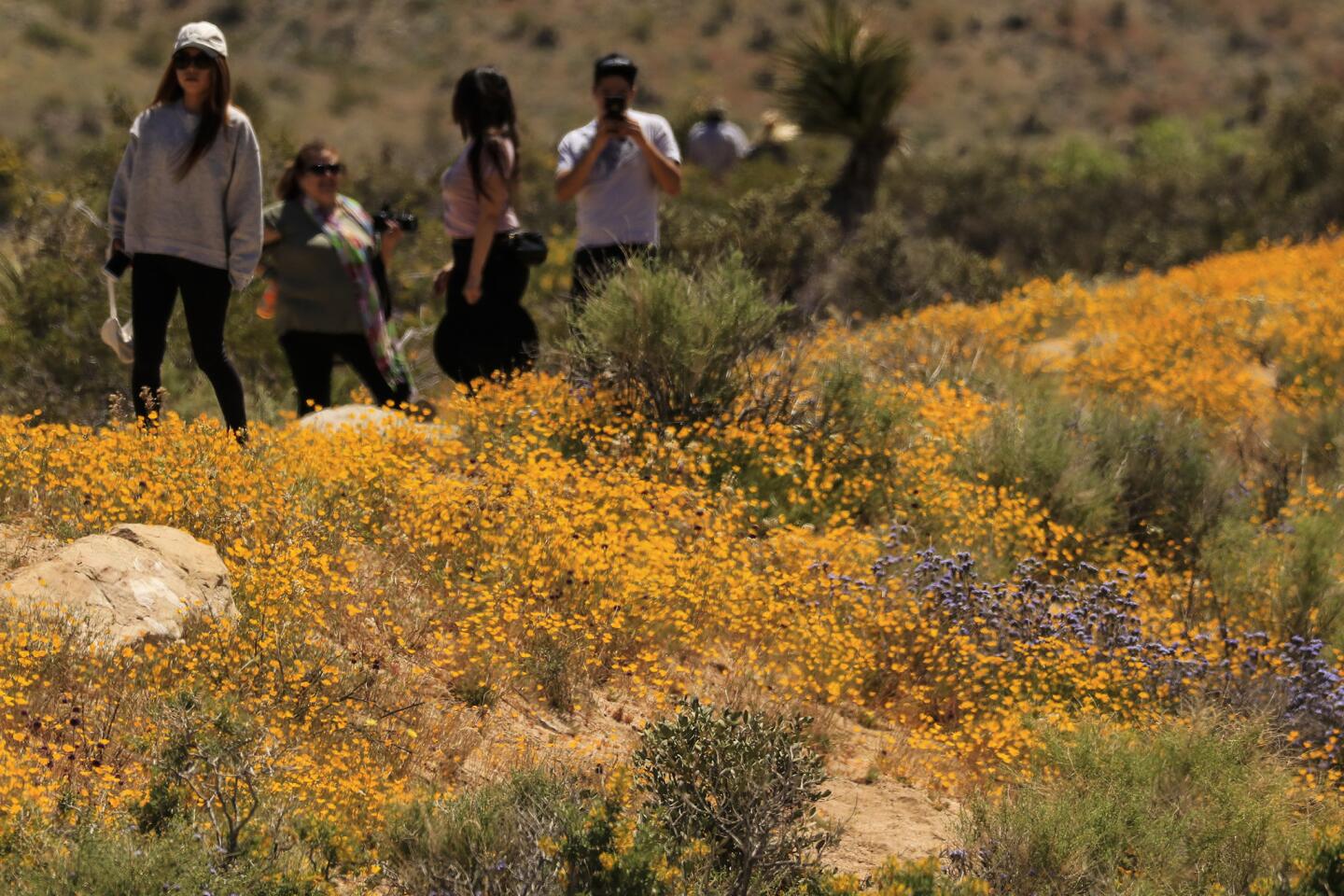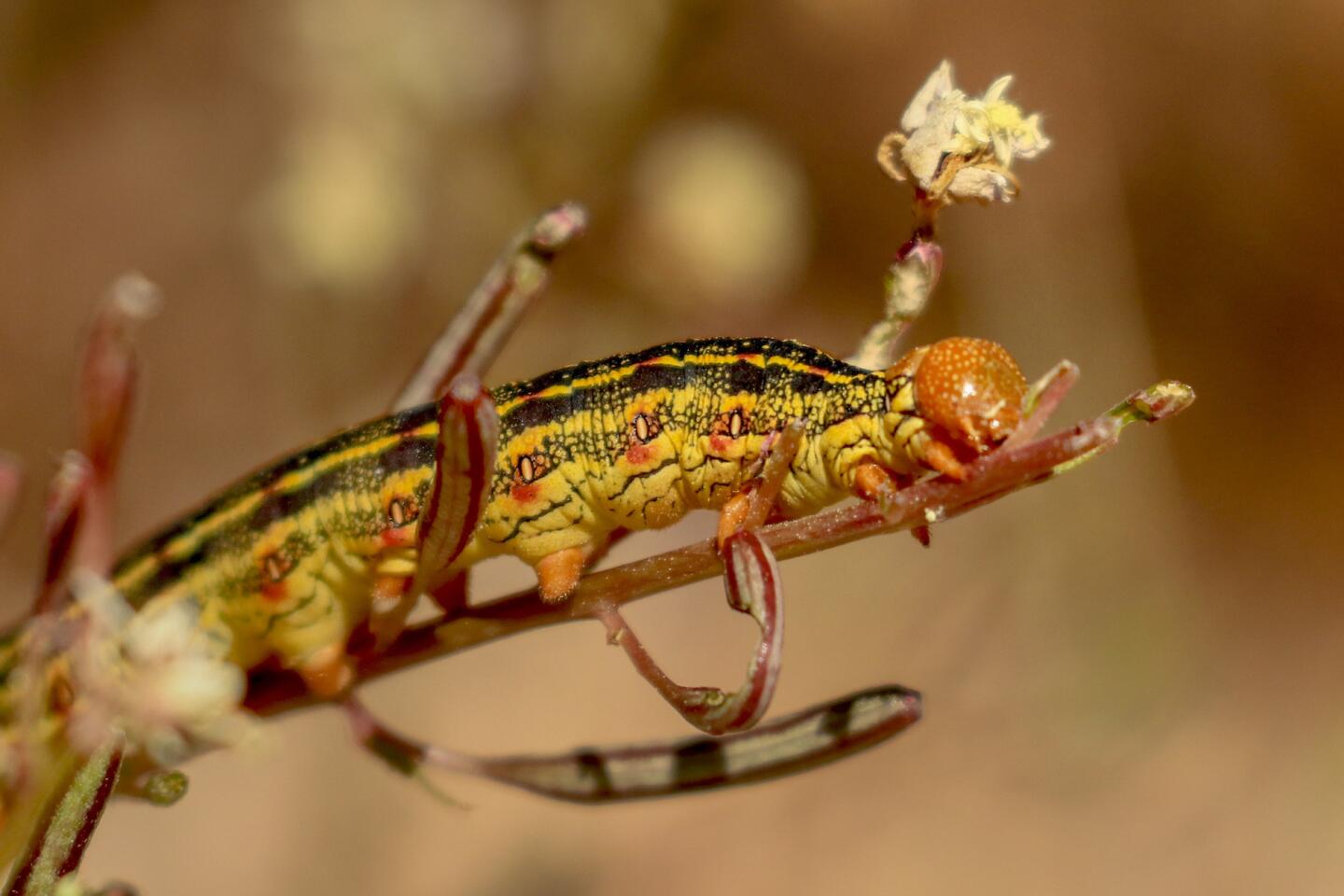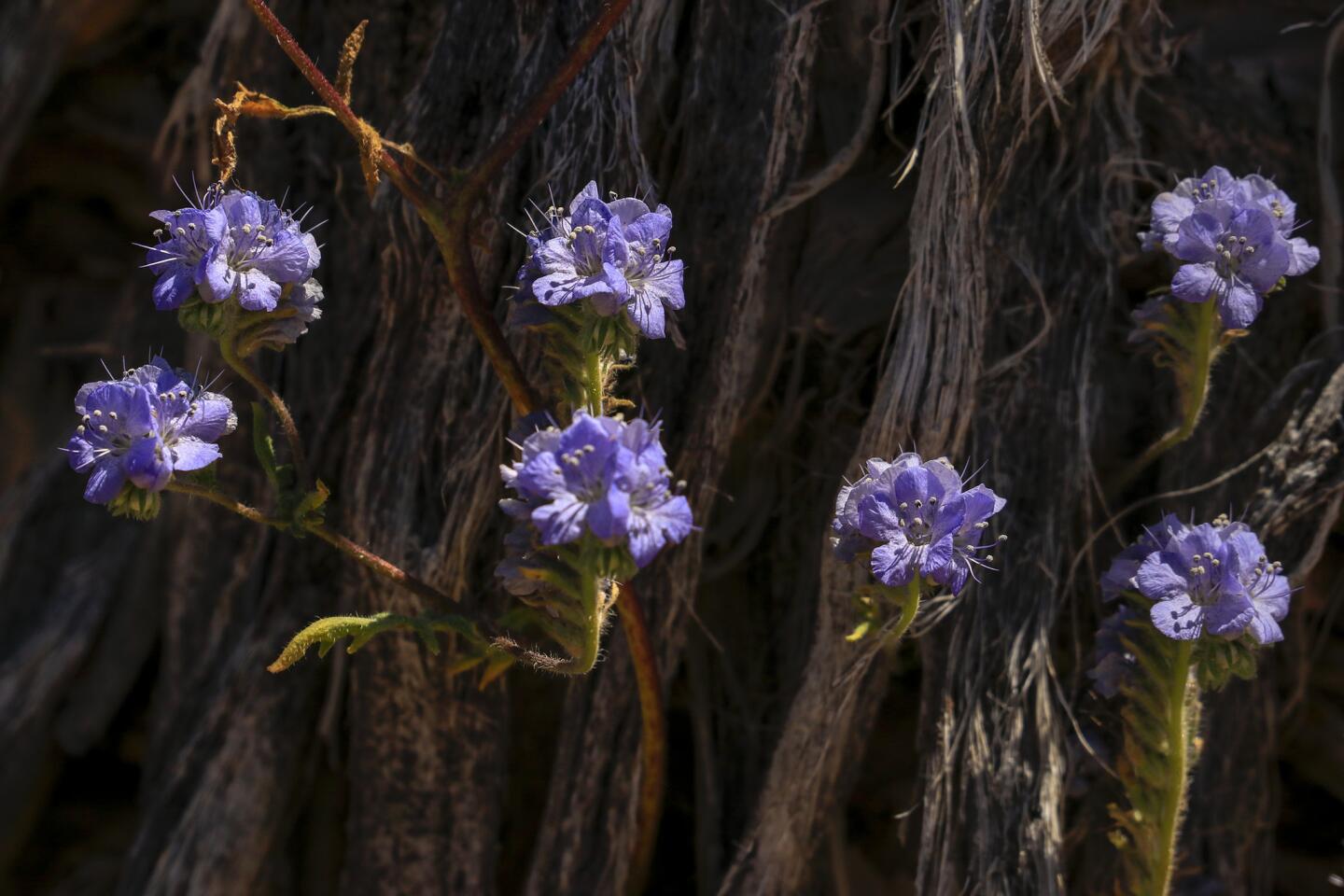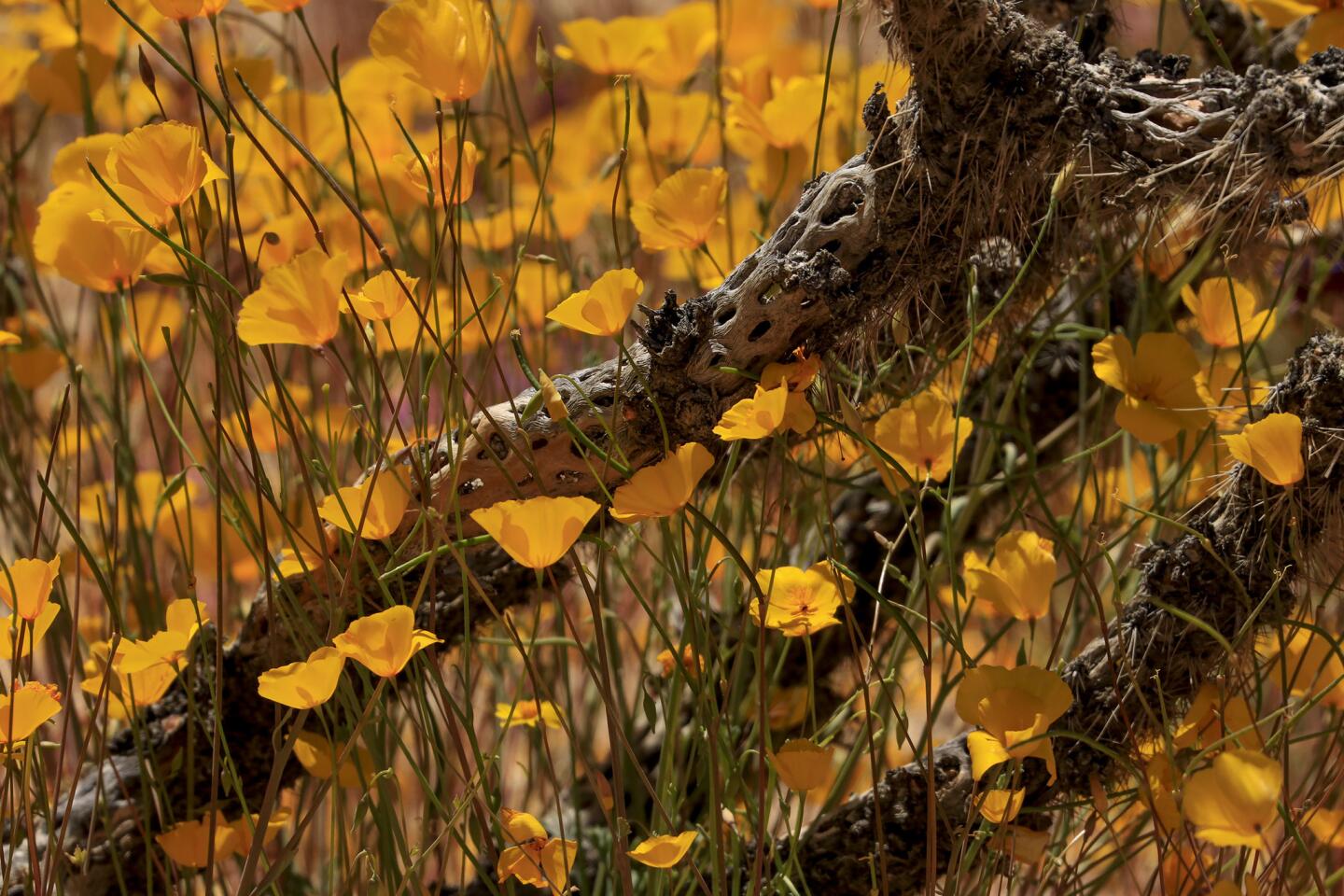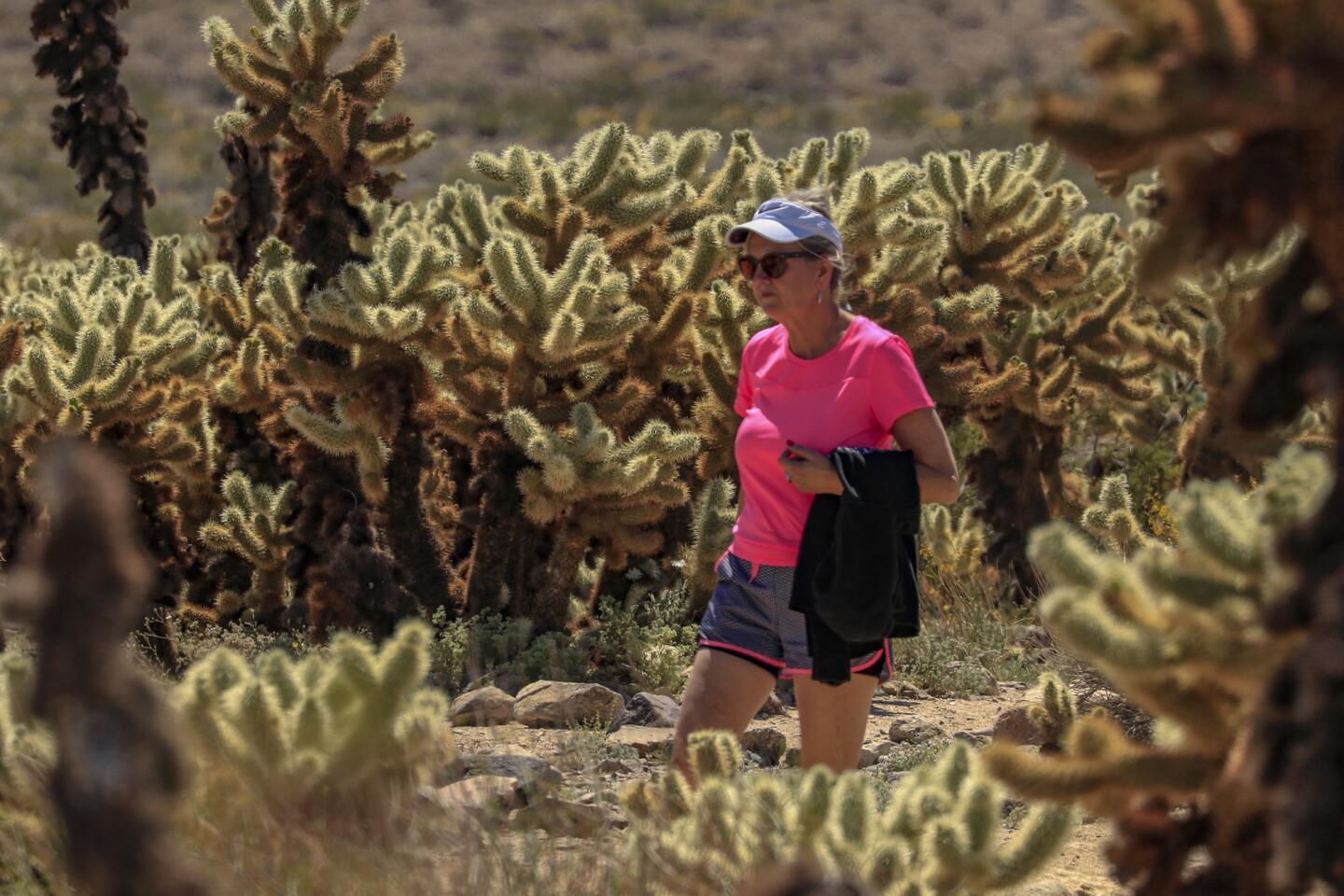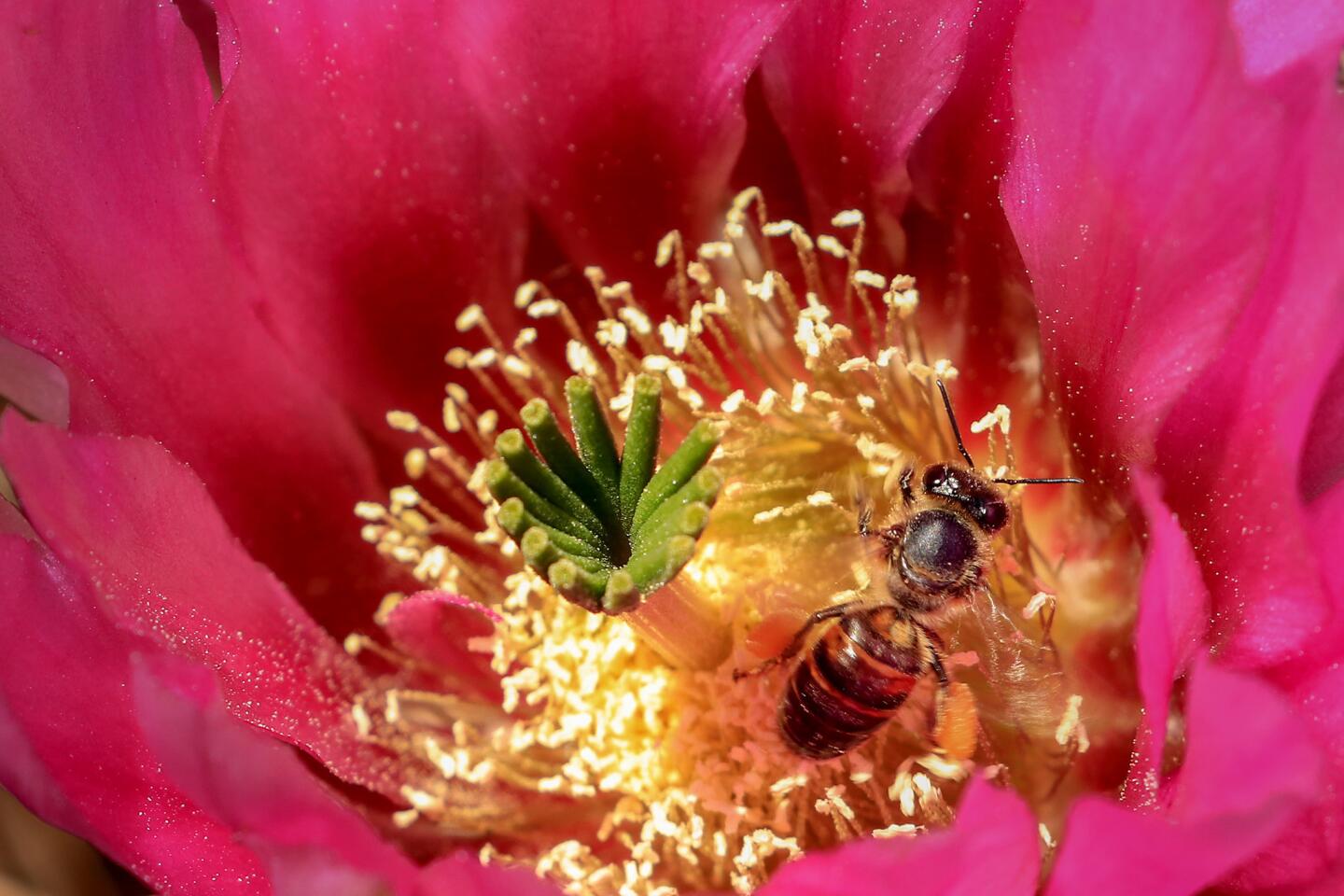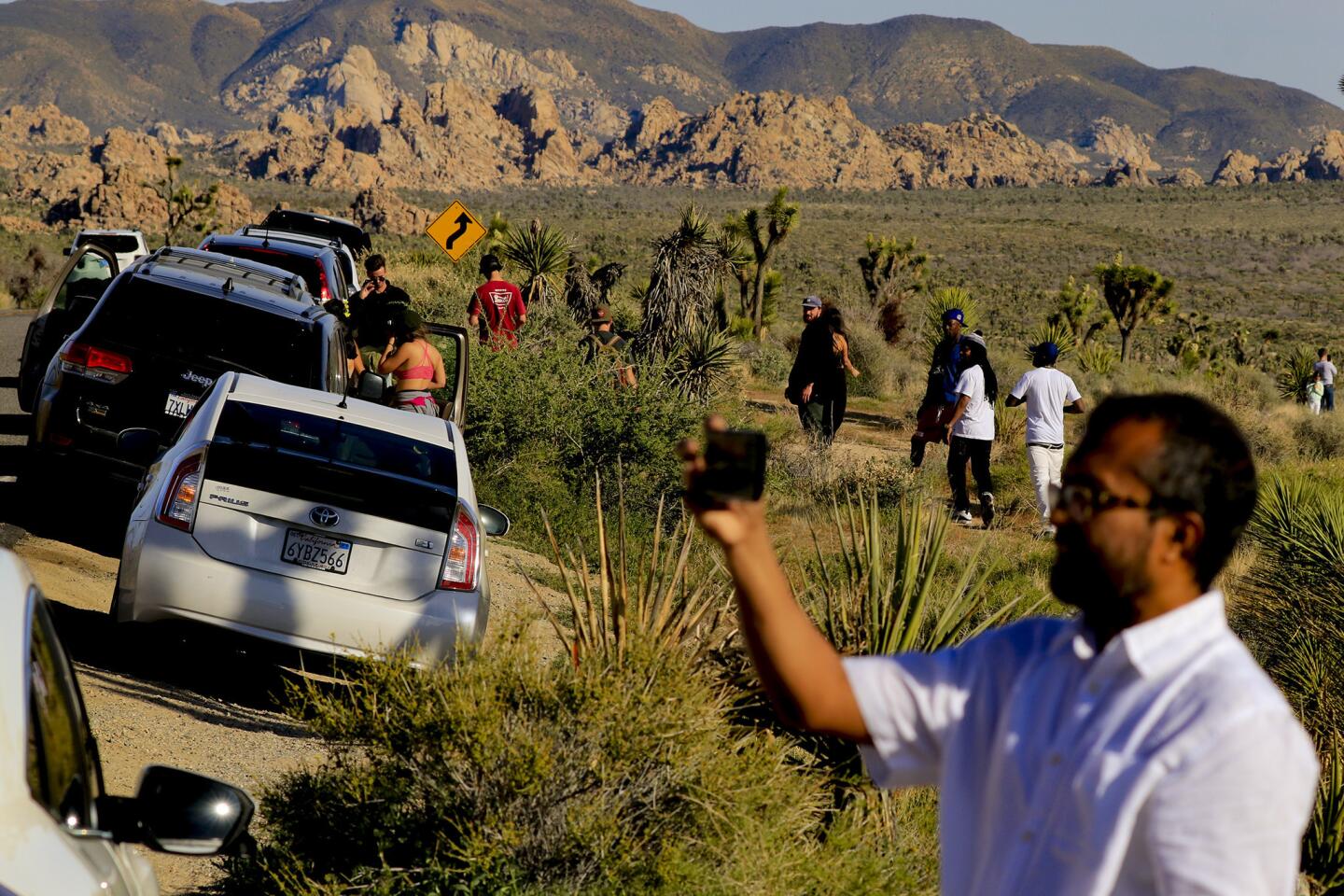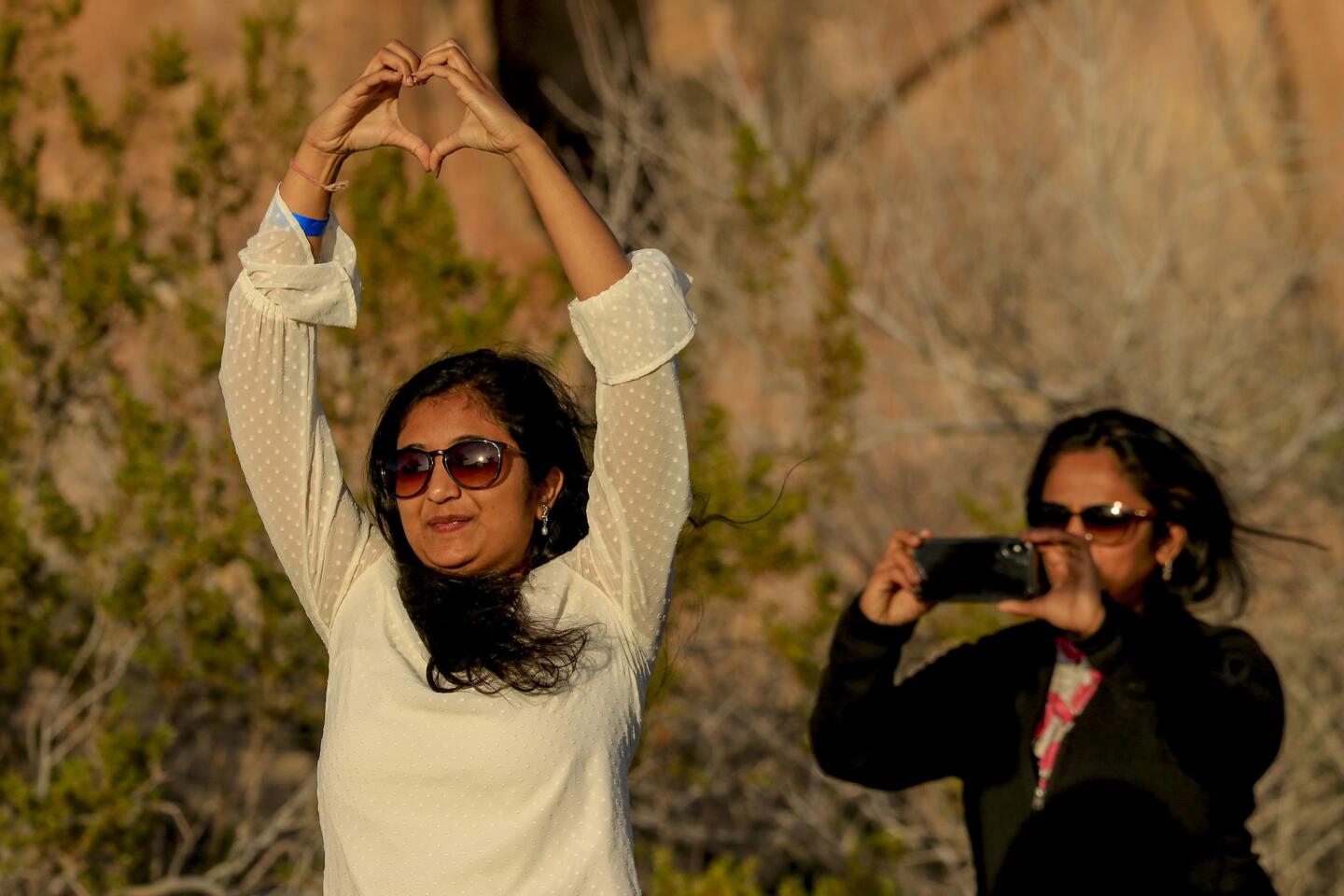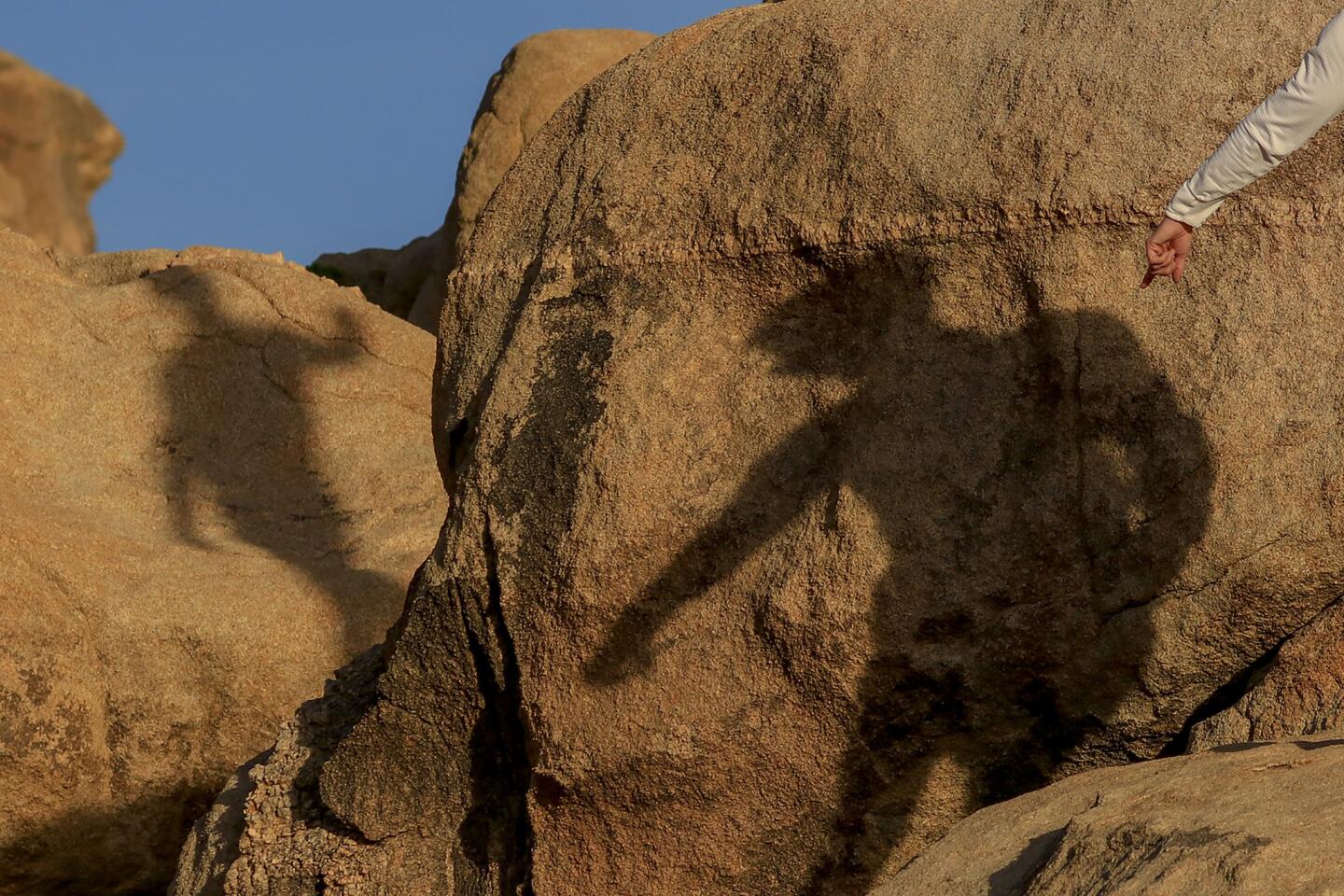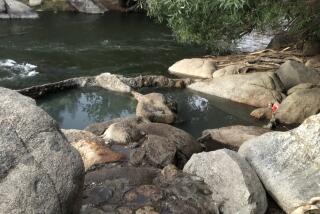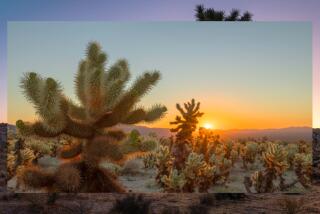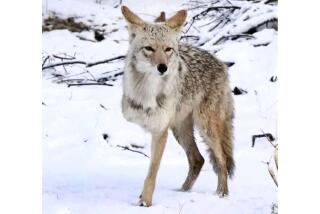Joshua Tree’s shutdown scars are largely hidden, but its spring glory is not
If you visit Joshua Tree National Park in coming days, you may see blooming wildflowers, blossoming Joshua trees and climbers dangling from all sorts of granite formations. What you probably won’t see are vacant campsites or signs of the partial government shutdown that started just before Christmas and ended 35 days later.
This may be a surprise if you’ve heard about what went wrong during the shutdown: vandals driving off road, illegal campfires and human waste in many places. At one rally during the shutdown, former Joshua Tree superintendent Curt Sauer asserted that the park wouldn’t recover for 200 to 300 years.
But it’s a big park. And desert rain and dedicated volunteers can heal many ills.
By the time rangers returned to work at the end of January, community volunteers had put in hundreds of hours cleaning pit toilets and other areas, Joshua Tree spokesman George Land said.
Rangers found and tidied the sites of about 100 illegal campfires, Land said, and did their best to repair an estimated 22 to 25 miles of tracks in forbidden areas.
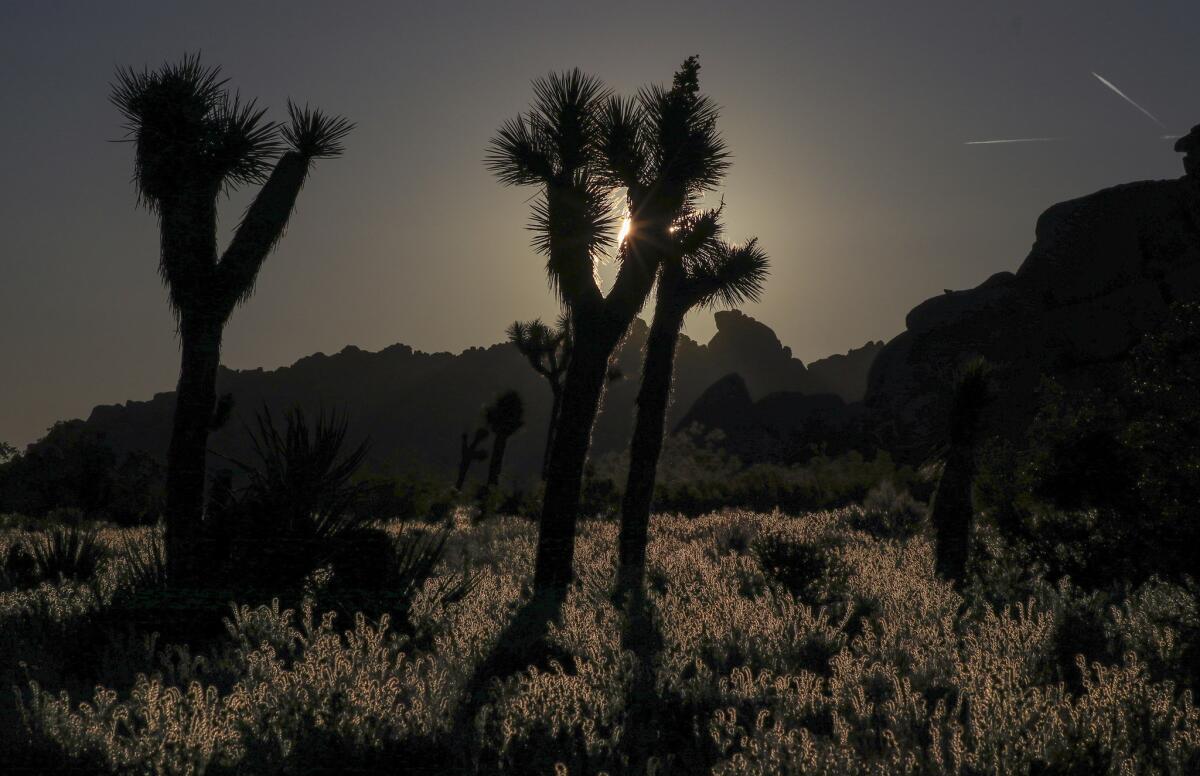
As for the Joshua trees, Land said, rangers could find just one that seemed to have sustained major damage in the shutdown.
The park’s dirt-road network also has recovered from rain damage that forced closures in February. The last of those closed roads reopened March 25.
Visitors “are not going to notice much,” in terms of shutdown effects, said Marker Marshall, a ranger at the park’s west entrance. “I think one of the biggest impacts we had was from off-road driving, and you don’t see that from the road.”
Kelsey Gaarder, who works at the Nomad Ventures shop in the town of Joshua Tree, said “the average customer is not going to notice. It’s going to be people who are really intimate with the park.”
The park’s winter damage is real, Land said, and to some degree damage is inevitable in a park where attendance has doubled during the last six years. (Last year’s attendance was 2.9 million.) But it’s tough to spot in a territory that’s larger than Rhode Island.
All in bloom

In two days of exploring the park in March, I saw thousands of hikers and Instagrammers roaming the roadsides, millions of blooming flowers and Joshua trees, several restrooms in reasonable condition, and no hint of the winter’s trauma.
Wildflowers began blooming in late March in southern parts of the park, which are at lower elevations and warmer.
Cars were parked left and right, spilling out visitors on their way to snap selfies and roam the Bajada All-Access Nature Trail near the park’s Cottonwood Visitor Center near Interstate 10.
On that trail and up the canyon along Pinto Basin Road, they found yellow, orange, blue and purple flowers along with the occasional red ocotillo.
Most hikers stayed on trails, but a few strayed into the flowers — a troublesome move, rangers say, for two reasons. One, the flowers are delicate. Two, this is a prime hiding place for rattlesnakes.
Although no bites have been reported, rangers say at least three hikers in March had surprise encounters with rattlers.
I saw no snakes but did encounter a foot-long lizard, a kangaroo rat, a few Pinacate beetles (which sounds much better than stinkbugs) and several black-tailed jackrabbits.
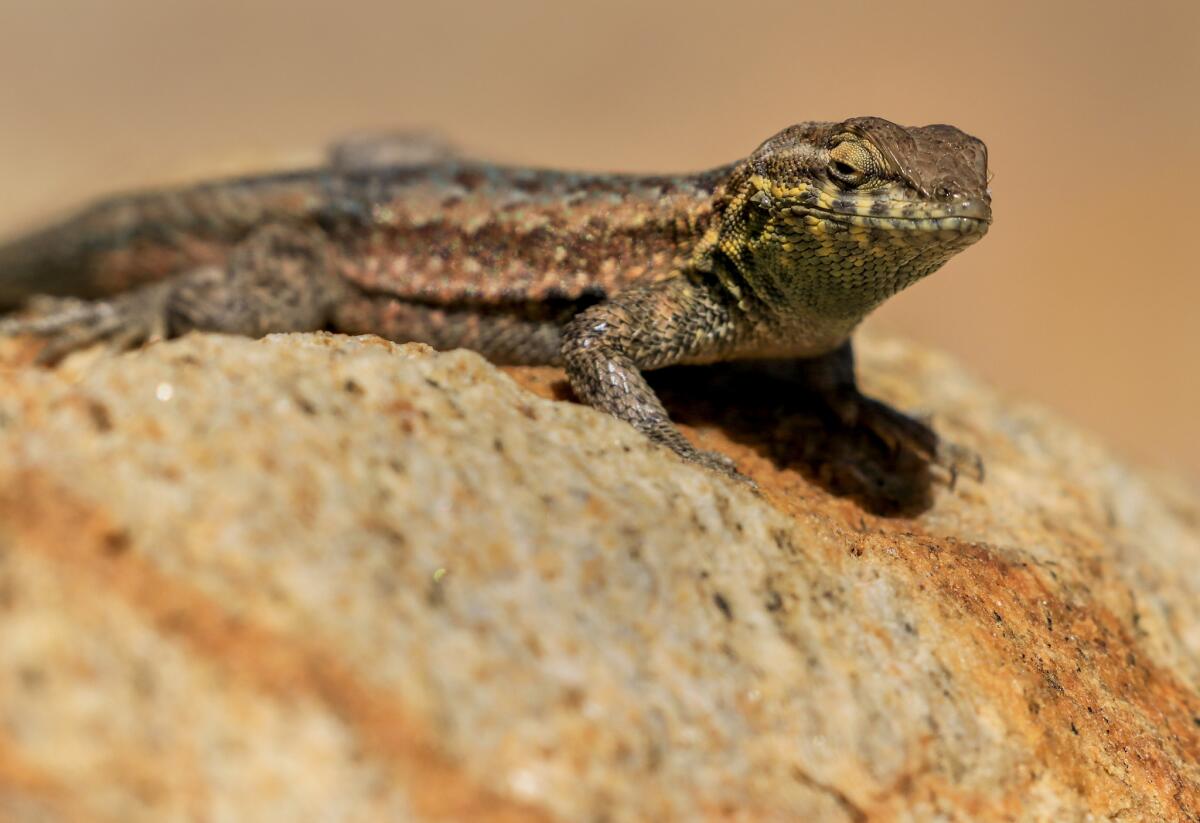
Many hills were dotted with yellow as Pinto Basin Road climbeds toward the northern portion of the park. In the Cholla Cactus Garden area, hikers marveled at the striking sight of teddy bear cholla cactus in the foreground, yellow blooms beyond.
Joshua Tree has seen growth of all sorts this season. On March 12, President Trump signed legislation that adds about 4,500 acres to the park as part of a broad expansion of public lands in the West.
Blossoming trees
At higher elevations, beginning near the White Tank area, wildflower blooms are possible through the end of April. Meanwhile, a rare mass Joshua tree bloom is happening.
These trees are striking any time of year, their spiky arms reaching to heaven at odd angles. When they bloom, even longtime locals do a double-take: The branches sprout big white blossoms, each about the size of a pineapple.
I spotted one tree with half a dozen blooms, then another with a dozen, then another with 18 blooms.
“The blooms on those Joshua trees! I’ve been here four times and that’s the first time I’ve seen those,” said Devon Warrick of San Diego.
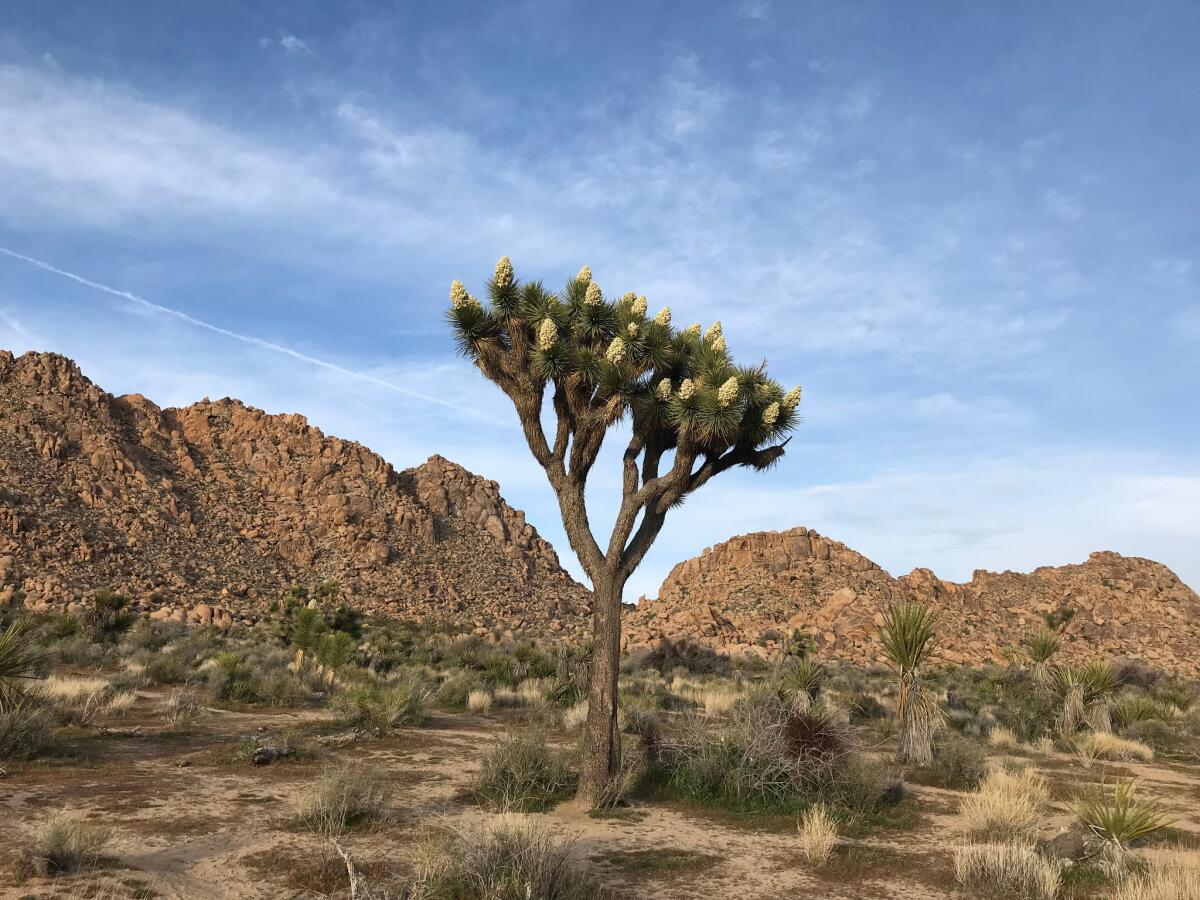
“Compared to last year, there’s a lot more color,” said her friend Christopher Carr, also from San Diego.
At Cap Rock, Cliffhanger Guides climbing instructor Sabra Purdy was belaying visitor Angie Concannon of Jackson, Wyo., who was descending a 50-foot boulder.
The winter was rough, Purdy said, but “I think most of the visible damage has been mitigated.” These days, she added, she’s not just busy but “ballistic,” handling the flood of spring-vacation visitors.
Purdy’s parting advice: “All the little seedlings right now are so fragile. Be really conscious about how you move through the desert.”
If you go
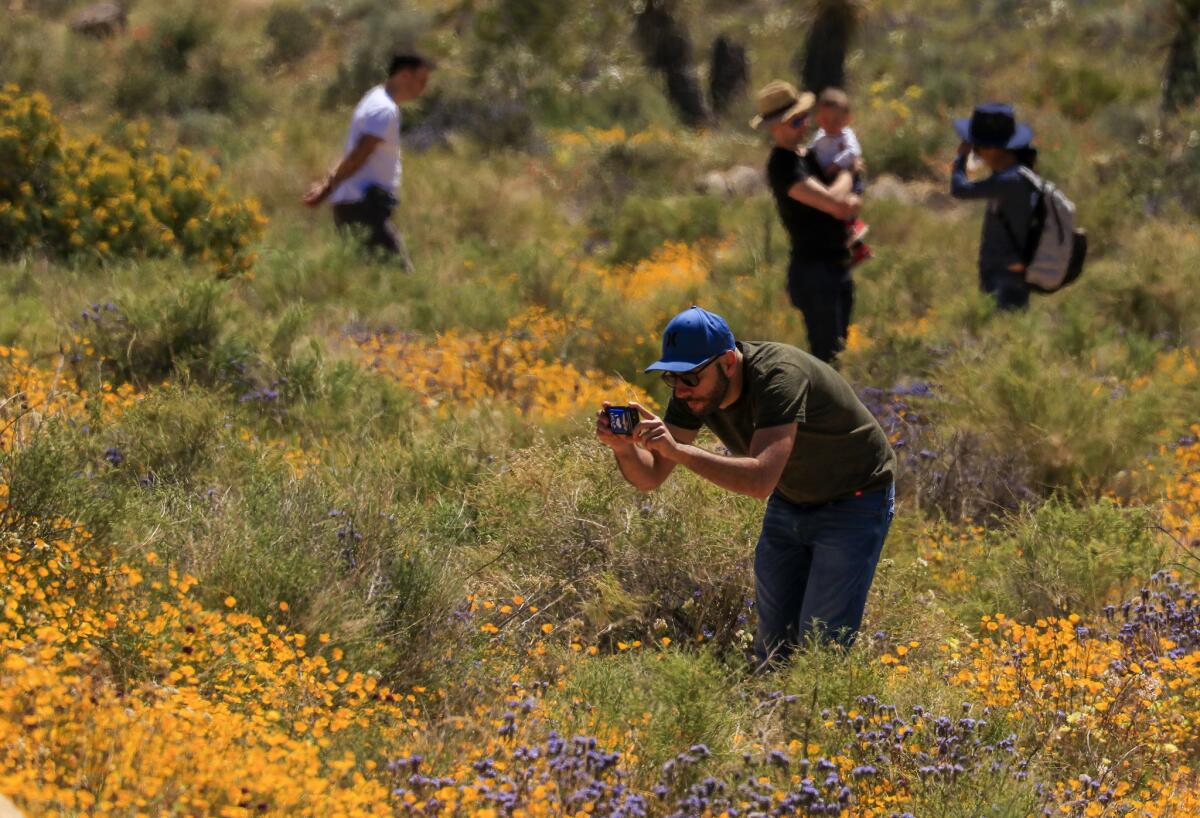
Camping and lodging: Weekend campsites in Joshua Tree book far in advance from October through May. As of April 10, the park’s campgrounds had openings in the second half of April (usually on Sunday and Monday nights). Most sites cost $15-$20 per night, on top of park admission ($30 per car).
To check availability and make a reservation, go to recreation.gov. Many of the park’s campgrounds accept bookings for the cooler months but switch to a first-come, first-served operation June through September, when temperatures frequently rise above 90.
Outside the park, many private campgrounds, hotels, motels and rental properties offer accommodations. For info on campgrounds, go to HipCamp, Joshua Tree Lake RV & Campground, JT Sportsman’s Club and Twentynine Palms RV Resort and Cottages.
WHERE TO EAT
Crossroads Cafe, 61715 Twentynine Palms Highway, Joshua Tree; (760) 366-5414. Open 7 a.m.- 9 p.m. Often a line at dinner. Main dishes and sandwiches $8.50-$16.50.
Country Kitchen, 61768 Twentynine Palms Highway, Joshua Tree; (760) 366-8988. Breakfast and lunch; main dishes $7.95
christopher.reynolds@latimes.com
Follow Reynolds on Twitter: @MrCSReynolds
More to Read
Sign up for The Wild
We’ll help you find the best places to hike, bike and run, as well as the perfect silent spots for meditation and yoga.
You may occasionally receive promotional content from the Los Angeles Times.

